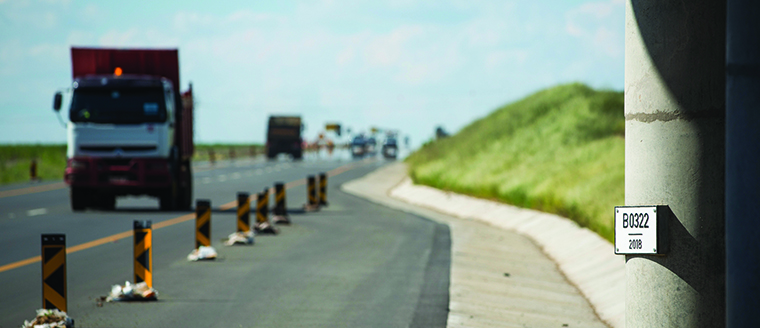


The national road network is the lifeblood of South Africa’s economy.
The SANRAL national road network in the Free State is comprised of 879km of non-toll roads and 698km of toll roads.
It is necessary to toll national roads because it enables SANRAL to provide a high-quality road network faster than the tax-based revenues which would traditionally fund these roads.
Tolling delivers the much-needed infrastructure sooner rather than later and ensures dedicated funding for maintenance of the road.
The construction of such infrastructure also helps create jobs and empower small contractors.
In addition to contributing to improved road safety, toll roads generally reduce travel distances and result in substantial savings on both the running costs of your vehicle and your time.
The ‘user-pay’ principle represents a fair and precise way of paying for transportation facilities. Tolls link the benefits for the road user with its fees by charging users only in direct relationship to how much of the road they use.
The national road network is the lifeblood of South Africa’s economy.
At the beginning of the project, there were several local farmers along the national route denying access to their land for the purposes of constructing the road. This led to the extension of the completion date of the project by 28 working days. The project also suffered the effects of drought in its first year and a number of community protests,
which prevented the contractor’s employees from coming to work.
The project employed 15 enterprises, of which 10 were local SMMEs. Three of those SMMEs are women owned. R64m was invested in targeted enterprises, of which R5.2m was spent on the local SMMEs.
The estimated date of completion of the project is February 2019.

Too little – and then too much – rain has caused delays in the upgrade of this section of the N1. The upgrade involves turning the single carriageway to a dual carriageway and includes the construction of two bridge structures and numerous culvert crossings.
The contractor experienced serious challenges related to the extreme drought in 2015, when it was difficult to source water for construction. Excessive rain in the following year caused some delays and damages due to flooding. The contractor also experienced delays caused by slower-than-expected relocation
of electric lines and optic fibre services. The contractor has completed most of the work, except for a final surfacing layer, which will only be constructed in the warmer months – from September 2018. The estimated completion date is the end of October 2018.
The contractor has spent approximately R27m on targeted labour to date, of which R10.2m and R7.2m was spent on youth and women, respectively. Approximately R76.5m has been spent on targeted enterprises, of which R40.2m and R22.1m was women- and youth-owned, respectively.

The rehabilitation and upgrade of the N1 between Winburg interchange and Winburg Station is complete.
This project involved the upgrading of the existing section of roadway from a twolane highway to a four-lane, divided dualcarriageway facility.
Construction started in January 2016 and was completed in May 2018, at an investment of R438m.
A major challenge on this project was community development – the CIDB level for SMMEs had to be reduced from the minimum entry-level of 3 CE, to include grade 1 and 2 CE contractors, in order provide more opportunities for community participation.
The total spend on black-owned SMMEs was R43.3m. Local labour was used and a total of R23.6m was paid, inclusive of women and youth.